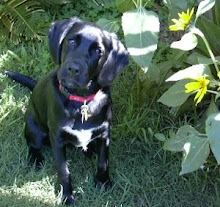PRESS RELEASE
FOR MORE INFORMATION
Tom McPheron Phone: 847-285-6781 Cell: 773-494-5419
e-mail: tmcpheron@avma.org
FOR IMMEDIATE RELEASE
April 24, 2007
LiveSmart Weight Management Chicken and Brown Rice Dog Food Recalled Due to Potential Melamine Contamination
SCHAUMBURG, Ill.
—
LiveSmart Weight Management Chicken and Brown Rice dog food was recalled by its manufacturer SmartPak on Friday, April 20. SmartPak is the fourth of five manufacturers that received potentially contaminated rice protein concentrate supplied by distributor Wilbur-Ellis. According to the SmartPak Web site, less than 1,200 pounds of product had left the company's facility prior to the recall and SmartPark notified every affected pet owner via telephone and email (see the SmartPak Web site).
The other pet food manufacturers that received potentially contaminated rice protein concentrate imported from China by the Wilbur-Ellis company included: Blue Buffalo Company, Natural Balance Pet Foods, and Royal Canin. Dr. Stephen Sundlof, director of the Center for Veterinary Medicine at the FDA, said that
FDA tests were positive for melamine in a product by a fifth pet food manufacturer, but that manufacturer has elected to conduct private tests prior to recalling its product. Results are expected to be known within a day.
Melamine-contaminated wheat gluten was the source of the initial pet food recall issued on March 16, 2007. That recall has resulted in the recall of hundreds of dog and cat foods produced by Menu Foods.
In the wake of these recalls, the American Veterinary Medical Association (AVMA) reminds pet owners to continue to consult the AVMA listing of recalled pet food and discontinue feeding pets any food that has been recalled. The AVMA advices that any animal that is showing symptoms such as loss of appetite, vomiting, diarrhea, and changes in urination—common symptoms after consumption of recalled pet foods—should be seen by a veterinarian as soon as possible.
A comprehensive AVMA Pet Food Recall List is available at
the AVMA Pet Food Recall Website. This list contains all recall information that has come to the attention of the AVMA, but it is not guaranteed to be complete. The AVMA encourages all concerned to contact the specific manufacturer regarding the status of any particular pet food or treat.
Veterinarians should report all cases of illness and death linked to a recalled pet food by calling the FDA's State Consumer Complaint Coordinator. A list of these coordinators is available at the
FDA Consumer Complaint Website. For more information, please visit the
AVMA web site.















